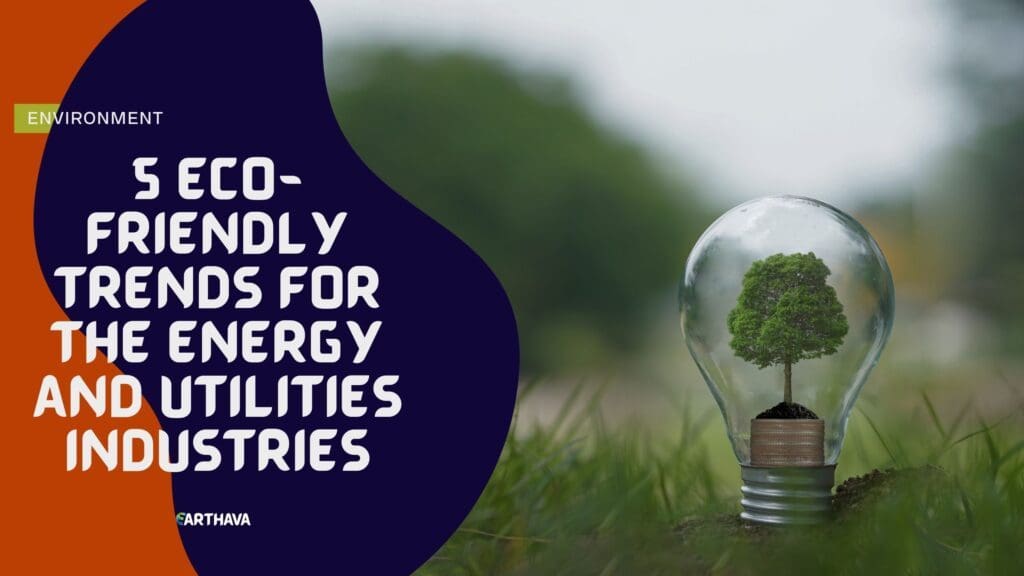2019 coming to an end, and the energy and utilities industry has begun to show an inclination toward new goals and plans for the coming decade and more. A majority of the power companies have started to show an interest in clean and renewable energy as the dangers of climate change are escalating.

Energy consumers have also begun to choose clean sources of energy and fuel. Climate change in the last few decades has deemed it necessary to monitor the carbon footprint mankind is leaving behind and to utilize eco-friendly habits in all spheres of human life.
The advantages of renewable energy are countless. Not only are they healthier for the environment, but they also have great economic potential. Harnessing the power of natural resources like water and air, which are available throughout the UK, the change towards cleaner resources looks like a permanent one.
The rise of clean energy and utilities has also brought about lifestyle changes, for example, in the construction business. A majority of homes across Europe are incorporating eco-friendly building materials to minimize the use of manufactured energy and avoid waste.
In other words, the world is moving towards new trends, as observed by many energy consultants. Highlighted below are energy and utility trends that industries can implement in 2020.
Stronger Climate Protection Goals
Energy and utilities industries are being asked by their investors to analyze their business goals in relation to environmental impact. Recently, investors also began to weigh the pros and cons of buying certain shares based on the company’s take on environmental issues and efforts to curb climate change, signaling a growing trend towards mindfulness about the environment and how important the cause is becoming, even in economics.
Many industries have also begun to set aside a budget to further research into solutions geared towards climate change and reducing the environmental impact of energy and use; research will include energy storage, next-generation technology, carbon capture, energy efficiency, renewable resources, etc.
Curating New Business Models That Prioritize Environmental Protection
As technology and economics advance, so do businesses that pertain to the energy and utility sector. As one of the largest industries that consist of processes and waste that directly impact the environment, this sector must begin to reevaluate its business goals. Newer regulations and scaling of pilot programs and more are expected in 2020.
Companies are considering clean energy transitions and looking into new sources of revenue generation. The utility industry is also considering trans-active energy models using new technology and setting up opportunities for EV charging, rooftop solar equipment, vehicle-to-grid transactions, and so on. In other words, the energy and utility sector is looking to change its processes and outputs to promote environmental well-being and control climate change.
Minimizing Carbon Emissions By A Large Margin
Carbon emissions leave lasting impacts on the environment. Instead of the environmental crisis, the energy and utility industry is showing an inclination towards reducing carbon emissions of their processes and for their customers too. The power industry aims to electrify most of its processes and also seeks to revamp heating, cooling, and transportation–some vital processes.
The growing fleet of electric vehicles is a great and promising trend and is also a prediction of EV infrastructure being laid out to aid future business processes. The utility industry is also working on innovating strategies and technology, which aid minimal carbon emission lifestyles and industrial processes and also aims to take advantage of wind and solar energy.
Smart Cities Will Become Increasingly Popular
The way of life has been quite detrimental for the last few centuries. The processes involved in sustaining human life have created a large carbon footprint, which has begun to wreak havoc, deeming it important for energy and utility industries to take note and find alternatives to cater to the demand for energy. The advent of smart cities, it seems, could be a growing trend that would aid in this change.
Smart cities will utilize eco-friendly construction materials and processes, which will reduce the need for energy sources and minimize the wastage of natural resources. Utilities will help smart cities to incorporate environmentally inclined goals and also use technology to enhance the quality of life. Smart cities will also encompass educational and political institutes when it comes to curbing climate change. The change has already begun with the installation of smart grids and infrastructures alike.
Energy Storage Will Become a Priority
Another important trend that energy and utility industries can adopt for 2020 is the growing popularity of energy storage. By 2024, it is speculated that the growth of the energy storage industry will rise to 158 gigawatts per hour after tripling in the year 2020! By being able to store energy, there will be minimal wastage of resources, a reduction in energy and utility pricing, and a lesser need for fossil fuels.
Research and technology will be invested in creating reliable and durable batteries that can store energy from wind and solar means, and more insight is still yet to come. The high demand for energy doesn’t look like it will drop, increasing the need for the energy and utility industry to work on this trend and make it a permanent one.
Conclusion
Thanks to technology, innovation, education, and awareness, the world is becoming increasingly united in the fight against climate change. From micro-changes from individual lifestyles to macro changes like government regulation and industrial processes, change is very evident. The advantages of renewable energy cannot be ignored any longer and as the pro-energy consultants have noted, change is definitely about to come.


